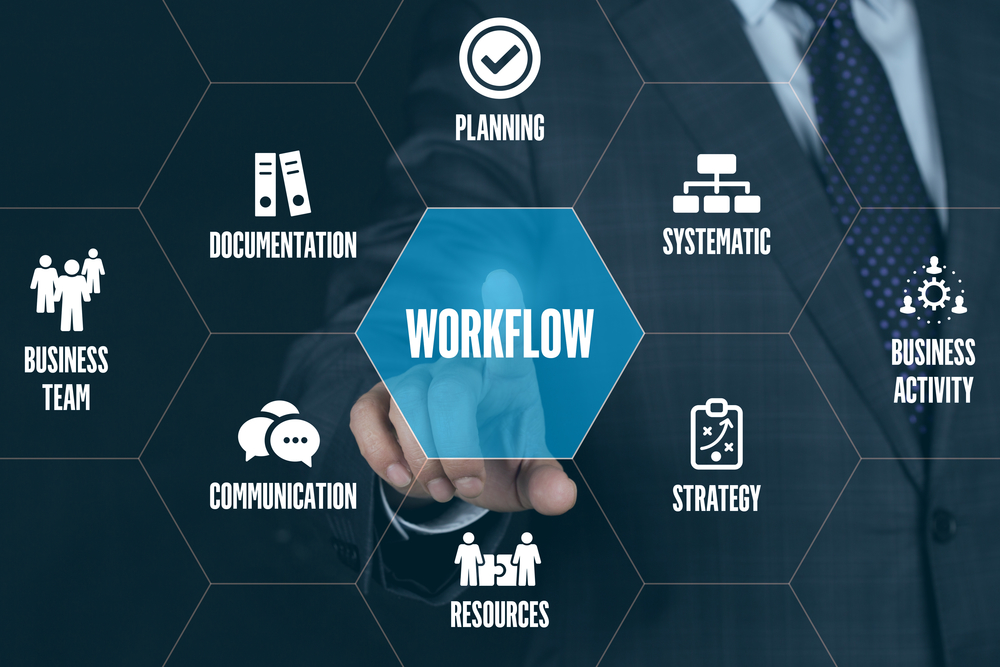Across industries, workflows have received a lot of attention in recent years, even in unexpected places. You might not think of emergency room doctors in terms of workflows, for example, but what do physicians do in an ER? They process patients. This usually involves multiple processes that have to work together, from intake to assessment to diagnosis to immediate and then future treatment.
Likewise, R&D teams and innovation task forces aren’t just sitting around thinking up ideas. They have specific processes and a discrete workflow. Every organization has a workflow of some sort, and by concentrating on your value chain and how it runs through your organization, you can uncover yours.
Even though the official definition of workflow may sound somewhat complicated, you’ll find that the people in your organization can easily state what and how your organization does what it does. The issue, though, is whether the workflow is defined to the point where everyone has the same understanding of it and is following the same practices. We each do things differently in some fashion. Sometimes this makes sense personally for that individual, but sometimes there truly are differences in the workflow.
If everyone’s not doing it in the same way, it makes it tough to get better. That’s because the changes you make might benefit one person more than another based on the way each person performs their work. However, when everyone is doing it the same, the benefit of the change can be measured with little variance from person to person. Even better, you’ll automatically improve just by getting to one workflow because you’re reviewing and finding the best-in-class among you. As you continue to get better, you can then measure and decide to change a specific area and see how that affects your output.
Step 1: Document Your Workflow
Even though the goal is to get everyone following the same workflow, that doesn’t mean you should have everyone directly involved in the process of documenting it. Select two or three people to lead the effort and have them interview the others, get their input, and collect best practices of how people do it.
Based on this information, this small group should then:
- Define the workflow
- Send it back out to the organization for comments
- Review the comments and decide what to incorporate
Remember: The job of this group isn’t to produce a great workflow; it’s to produce a great workflow that everyone will follow. Getting everyone’s input is an important step in getting their buy-in to the newly defined workflow.
Now that you’ve defined your workflow, you can identify points in the workflow that can measure (a) the flow and (b) the quality of work.
Step 2: Identify the Transformation Points
A workflow can be made of one process or many processes and sub-processes, but in all cases, these processes transform information and materials. Every step or sub-process typically involves an input and an output — the input you have is someone else’s output; the output you create becomes someone else’s input.
We use the word transformation here deliberately. When you think about these steps as transformations, you’ll view them completely differently. You aren’t just checking the box and getting it done; instead, you’re considering, am I performing this transformation in the best way that I can do it?
Each of these transformations takes time and delivers different levels of quality, so you need to measure the throughput and the quality of what you’ve done. People often ask, “What’s considered ‘good’ quality?” The answer is, you have to find out. You have to think about what you’re trying to accomplish and how you can make sure it’s the same every time. Once you’ve figured that out, you can do it that way for a few months, measure it, and decide: Is that good? Or do we need to do better?
When you’re merely working with data to identify norms, patterns, and variances, some of these methods will be easy to do in a simple spreadsheet. When it’s more complicated, you can always hire a consultant to work through the data and get you the answers you need.
While the statistical methods themselves aren’t difficult, make no mistake about it: Measuring what your organization does isn’t always easy. It takes work and effort. But consider the alternative. If you don’t drive how you’re being evaluated, someone else is going to determine it for you.
You’re going to have to dig deep into the details, and it’s going to take some time, but you’ll end up with a bulletproof case for why you do things the way you do them.

